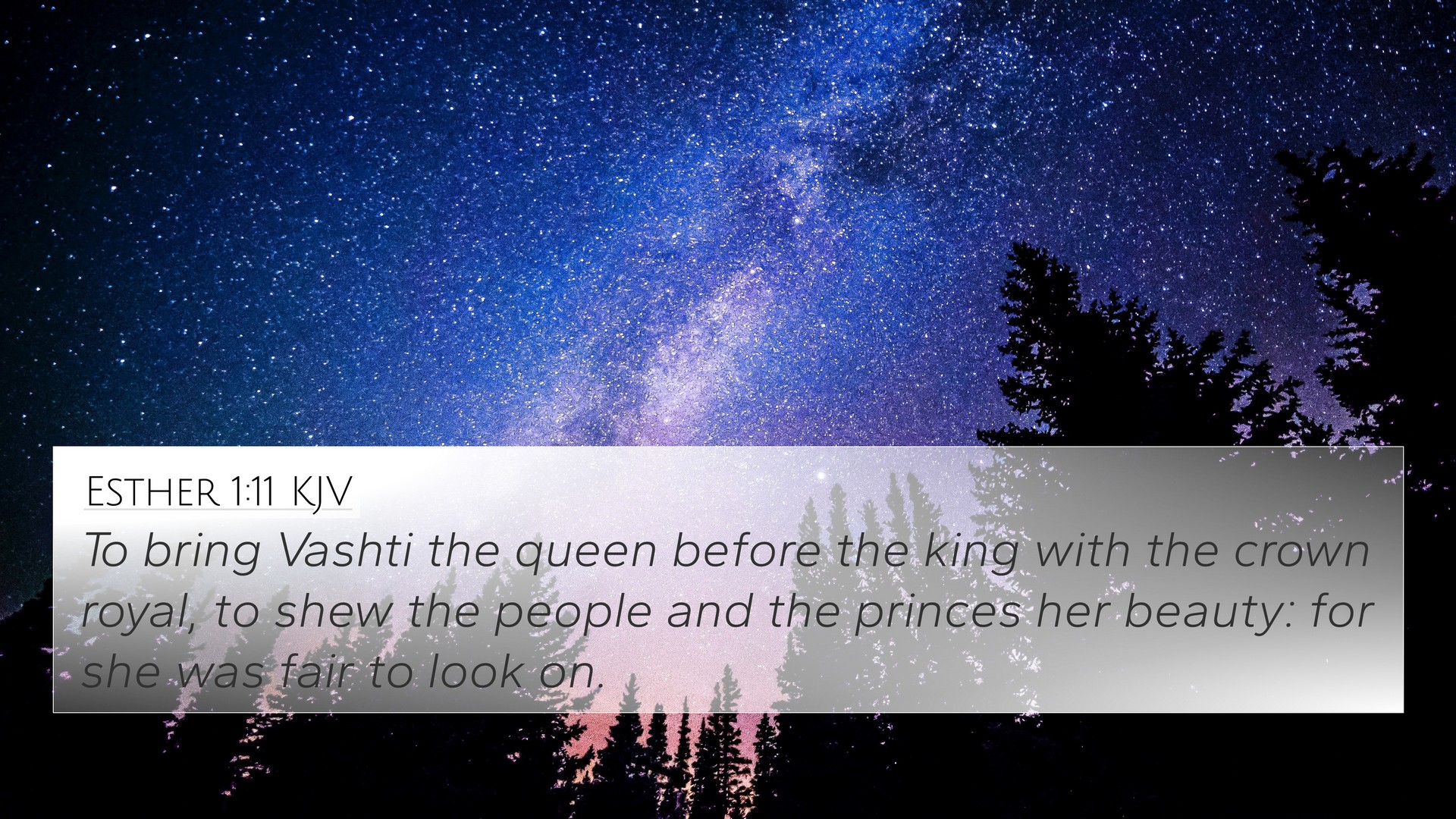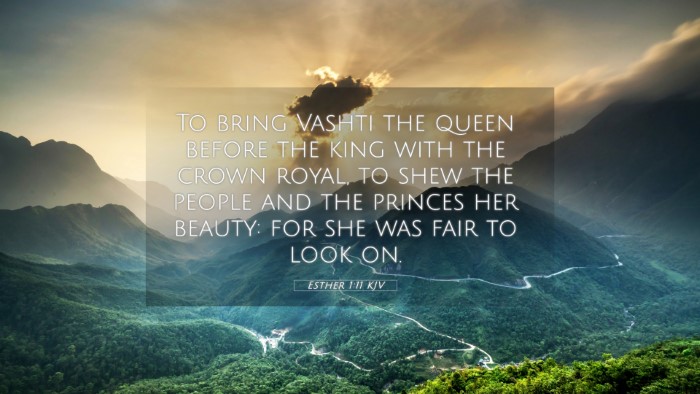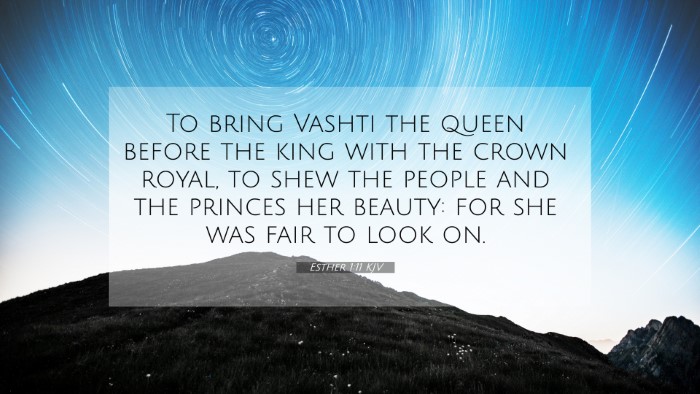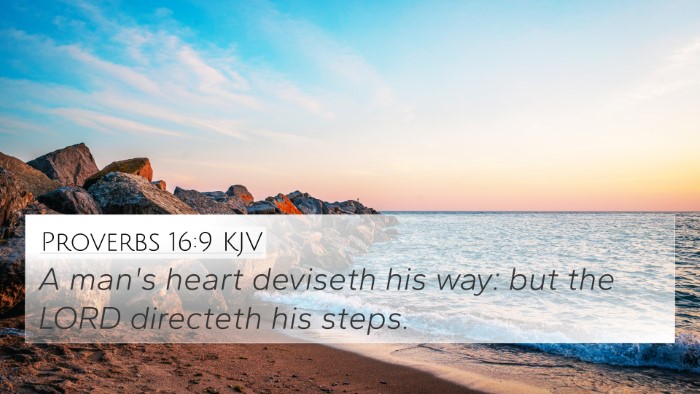Old Testament
Genesis Exodus Leviticus Numbers Deuteronomy Joshua Judges Ruth 1 Samuel 2 Samuel 1 Kings 2 Kings 1 Chronicles 2 Chronicles Ezra Nehemiah Esther Job Psalms Proverbs Ecclesiastes Song of Solomon Isaiah Jeremiah Lamentations Ezekiel Daniel Hosea Joel Amos Obadiah Jonah Micah Nahum Habakkuk Zephaniah Haggai Zechariah MalachiEsther 1:11 Similar Verses
Esther 1:11 Cross References
To bring Vashti the queen before the king with the crown royal, to shew the people and the princes her beauty: for she was fair to look on.
Uncover the Rich Themes and Topics of This Bible Verse
Listed below are the Bible themes associated with Esther 1:11. We invite you to explore each theme to gain deeper insights into the Scriptures.
Esther 1:11 Cross Reference Verses
This section features a detailed cross-reference designed to enrich your understanding of the Scriptures. Below, you will find carefully selected verses that echo the themes and teachings related to Esther 1:11 KJV. Click on any image to explore detailed analyses of related Bible verses and uncover deeper theological insights.
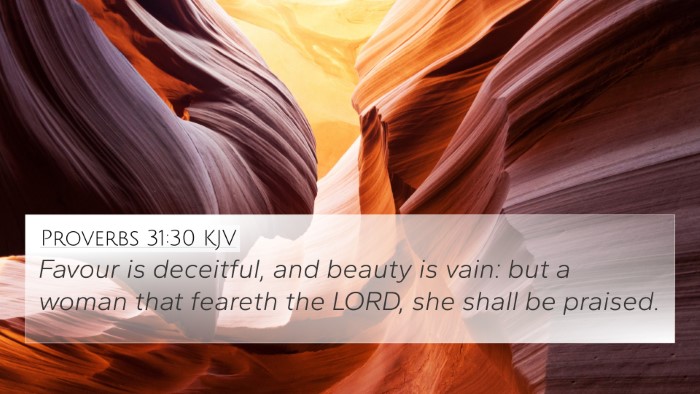
Proverbs 31:30 (KJV) »
Favour is deceitful, and beauty is vain: but a woman that feareth the LORD, she shall be praised.
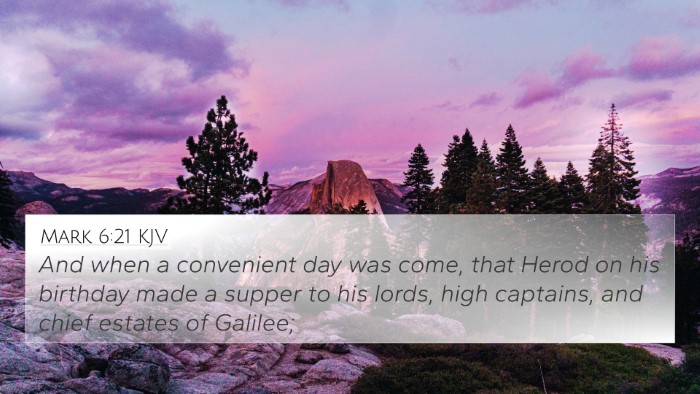
Mark 6:21 (KJV) »
And when a convenient day was come, that Herod on his birthday made a supper to his lords, high captains, and chief estates of Galilee;
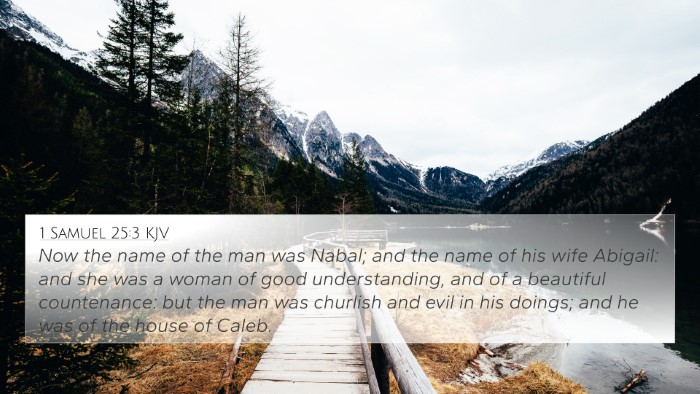
1 Samuel 25:3 (KJV) »
Now the name of the man was Nabal; and the name of his wife Abigail: and she was a woman of good understanding, and of a beautiful countenance: but the man was churlish and evil in his doings; and he was of the house of Caleb.
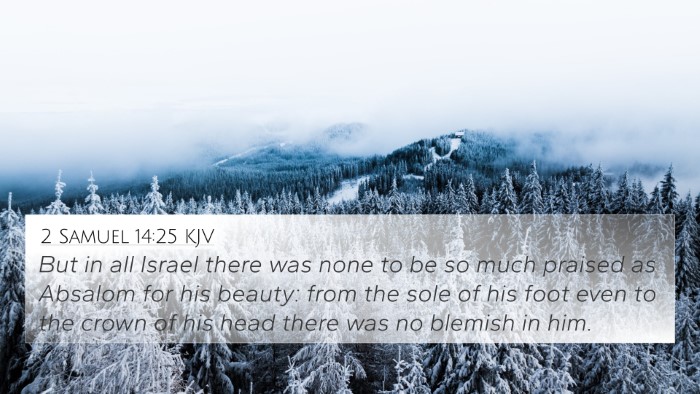
2 Samuel 14:25 (KJV) »
But in all Israel there was none to be so much praised as Absalom for his beauty: from the sole of his foot even to the crown of his head there was no blemish in him.
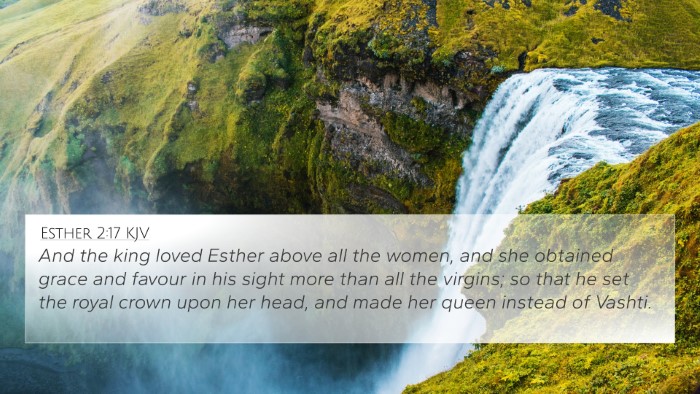
Esther 2:17 (KJV) »
And the king loved Esther above all the women, and she obtained grace and favour in his sight more than all the virgins; so that he set the royal crown upon her head, and made her queen instead of Vashti.
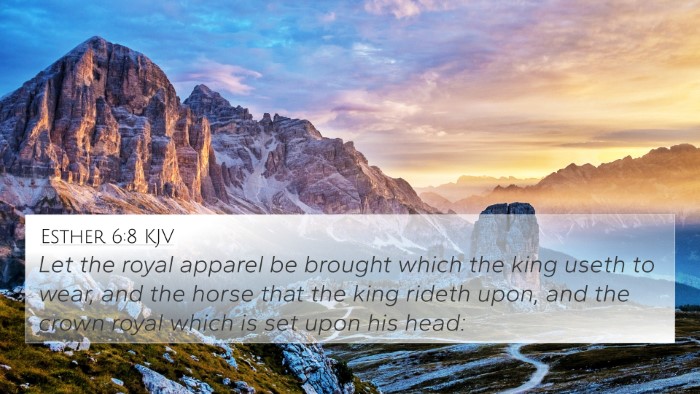
Esther 6:8 (KJV) »
Let the royal apparel be brought which the king useth to wear, and the horse that the king rideth upon, and the crown royal which is set upon his head:
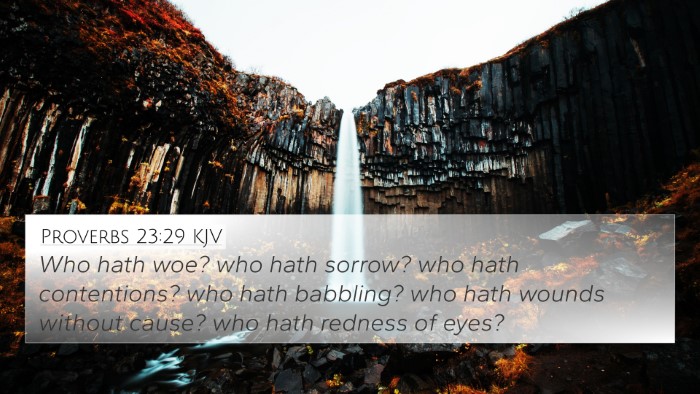
Proverbs 23:29 (KJV) »
Who hath woe? who hath sorrow? who hath contentions? who hath babbling? who hath wounds without cause? who hath redness of eyes?
Esther 1:11 Verse Analysis and Similar Verses
Esther 1:11 - Meaning and Interpretation
Verse Context: "To bring Vashti the queen before the king with the crown royal, to shew the people and the princes her beauty: for she was fair to look on." (Esther 1:11, KJV)
Overview of Esther 1:11
This verse is situated in the narrative of the Persian king Ahasuerus, who is throwing a lavish feast. His desire is to display the beauty of Queen Vashti to his guests, reflecting the themes of vanity, power, and the dynamics of court life.
Commentary Insights
-
Matthew Henry's Commentary:
Henry highlights the king's use of power and authority in requesting Vashti to appear. He notes that this represents not only a display of beauty but also the king's desire to assert his dominance and control over his wife and guests. It reflects the attitudes of men towards women in a patriarchal society.
-
Albert Barnes' Commentary:
Barnes elaborates on the implications of this request. He points out the cultural significance of beauty in the ancient world and how it was often equated with virtue and worth. In demanding this exhibition, the king shows his objectification of Vashti and the inherent risk he imposes on her dignity.
-
Adam Clarke's Commentary:
Clarke discusses the broader implications of the queen's refusal to obey the king's request, indicating that the situation sets the stage for the subsequent conflict and events that lead to her replacement. He emphasizes the moral complexities present in the narrative.
Bible Cross-References
Esther 1:11 connects with several other scriptures that explore similar themes of authority, beauty, and the role of women:
- Proverbs 31:30: "Charm is deceitful, and beauty is vain, but a woman who fears the LORD is to be praised."
- 1 Peter 3:3-4: "Do not let your adornment be external—the braiding of hair and the putting on of gold jewelry, or the clothing you wear—but let your adorning be the hidden person of the heart..."
- Genesis 12:11-14: Abraham's concern about Sarah's beauty in Egypt illustrates similar societal pressures regarding women's appearances.
- Esther 2:17: "The king loved Esther above all the women, and she obtained grace and favor in his sight more than all the virgins..."
- 2 Samuel 11:2: David's sighting of Bathsheba emphasizes the theme of beauty leading to temptation and folly.
- Ephesians 5:22-24: Discusses the roles of wives and husbands, resonating with the power dynamics presented in Esther.
- Luke 4:24: "But I tell you truly, no prophet is accepted in his own country," suggesting cultural biases in reception and obedience.
Thematic Connections
Esther 1:11 invites a broader examination of the following themes:
- Gender Dynamics: The verse reveals how women's roles are often defined by the desires and demands of men, pertinent in many biblical narratives.
- Power and Authority: The king's request depicts the absolute power he holds, raising questions about submission and respect within marriage.
- Beauty and Objectification: The emphasis on physical beauty points to societal standards and the reduction of individuals to their appearance.
Exploring Inter-Biblical Dialogue
Esther 1:11 serves as a point of discussion across the scriptures, reflecting cultural values and expectations. By examining this verse alongside others, one can explore:
- The contrast between divine expectation and human behavior in matters of morality.
- How beauty is portrayed in scripture, offering a broader understanding of its implications.
- Interrelationships between Old Testament narratives and New Testament teachings on character and integrity.
Utilizing Bible Cross-References for Study
Using tools for Bible cross-referencing can greatly enhance the understanding of verses like Esther 1:11. By diving into a Bible concordance or utilizing a Bible cross-reference guide, readers can:
- Uncover deeper insights and thematic links between scripture passages.
- Understand how biblical narratives interact and inform one another through a cross-reference Bible study.
- See the practical applications of ancient texts in modern life, enhancing study and interpretation.
Conclusion
The narrative of Esther 1:11 offers rich insights into the complex interactions of beauty, power, and gender in the biblical context. Through careful analysis and cross-referencing, readers can uncover layers of meaning that resonate with contemporary issues. This verse stands not in isolation but in a dialogue with numerous scriptures that illuminate the steps of faith, morality, and human relationship dynamics.
